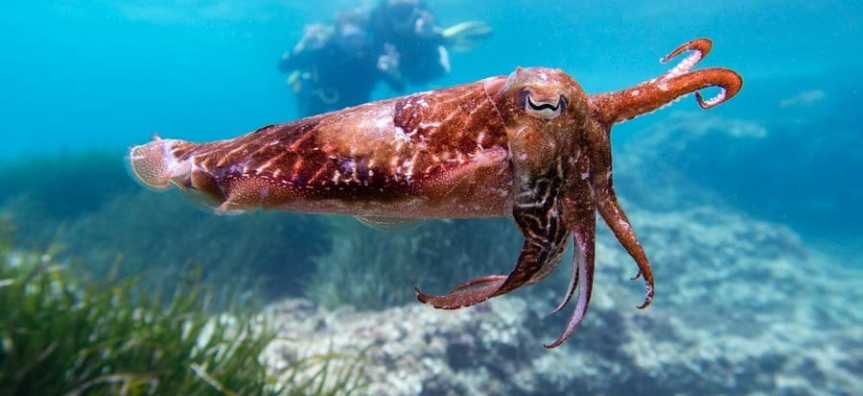
If you’re tough enough to brave the current chilly 16-degree waters of Cabbage Tree Bay, you’re likely to be rewarded with an appearance of one the reserve’s favourite celebrities – the Giant Australian Cuttlefish.
The cuttlefish flock to the temperate reef environment in the bay to make babies. And thanks to the colour-changing tactics of the flamboyant fellows, they’re more easy to spot than usual.
But there’s more than just fancy colours to these beautiful creatures - here are 6 fun facts about these much-loved marine visitors:
Something fishy
Cuttlefish aren't actually fish, but mighty molluscs known as cephalopods. There are over 100 species of varying size, with the weighty Giant Australian Cuttlefish reaching up to 80 centimetres long.
All fingers and toes
With a distinctive elongated shape and oversized head, cuttlefish have 8 arms and 2 tentacles to capture food. Both the tentacles and arms have suckers.
Can you see me?
Cuttlefish have w-shaped pupils, meaning they see in front of and behind simultaneously. To focus on an object, they change the shape of their eye, rather than the shape of their eye’s lens, like we do.
A whole lotta love
Cuttlefish have 3 hearts, 2 for pumping blood to their skirt-like gills and one circulating blood to the rest of their body.
Cuttlebones
They rely on their skeletons – cuttlebones - for buoyancy, ingesting and expelling liquid to hover. If you find a cuttlebone on the beach, look for teeth marks that indicate it may have reached a sticky end from a dolphin or sea lion
Inky disguise
Cuttlefish often squirt a cloud of ink to escape predators. Hundreds of years ago, ink pens (fountain pens) used this 'India Ink' from cuttlefish collected in the Indian Ocean.
To learn even more about these awesome creatures swimming in our local waters, watch this video with Marine Ecologist Sian Liddy.
And if you do spot a cuttlefish and you have an underwater camera, be sure to get a sneaky snap to enter into this year's Underwater Photo Competition when it opens at the end of July.
